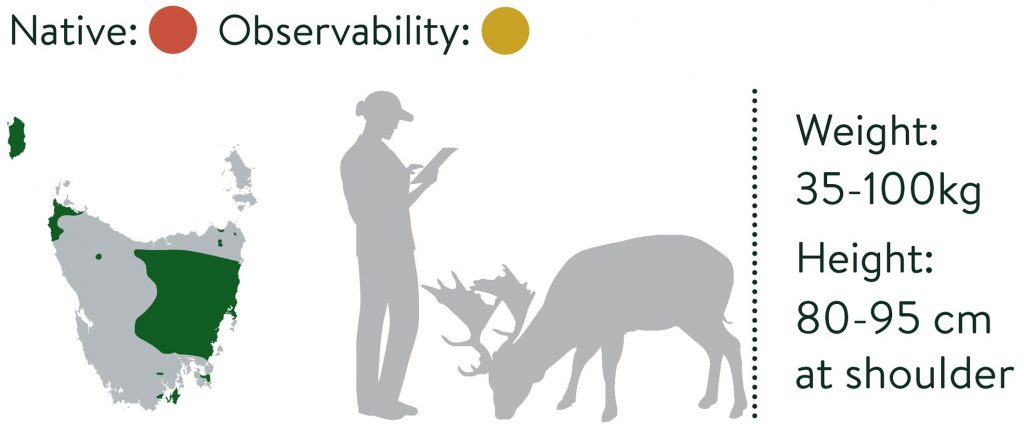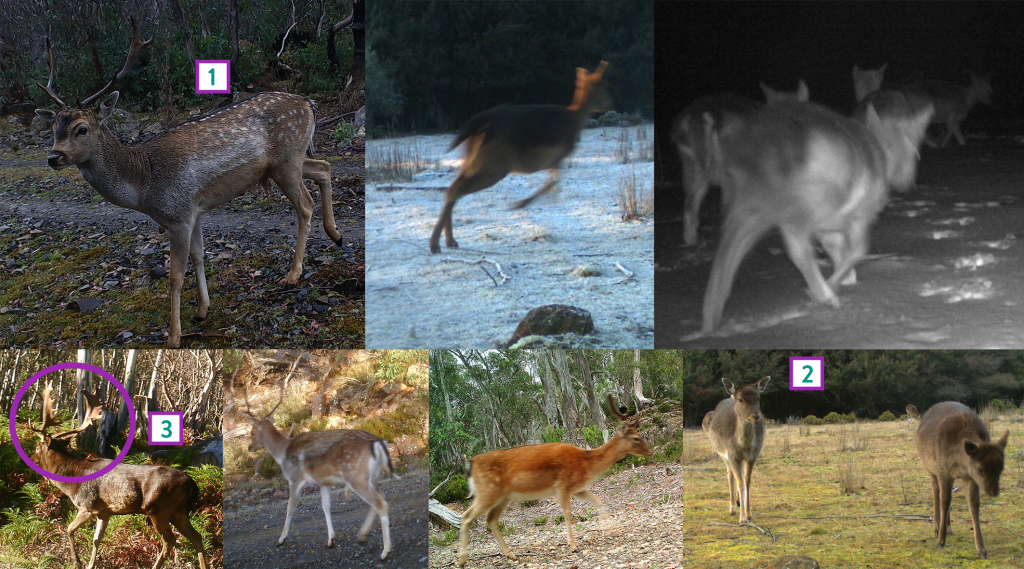Cervidae | Dama dama
Six species of deer were introduced to Australia by acclimatisation societies in the early 19th century. The only species to have survived in Tasmania is the fallow deer, which continues to expand its range both on its own but also via escapes and intentional release. The fallow deer population is growing at an alarming rate, and without change in management, is expected to reach one million by 2050.
The status and management of deer in Tasmania is unfortunately complicated. Fallow deer are a partly protected species under state legislation; there is a deer open season during which restricted numbers may be shot by licensed hunters and they can also be taken under crop protection permits.

Lifestyle
Fallow deer may be solitary or form large herds of individuals. Males (bucks) tend to hang out in bachelor groups but establish and defend territories during the mating season (autumn). Once the mating season (the rut) is over, males will cast their antlers in October/November, only to regrow a new pair by February. Mature bucks have flattened blade-like antlers with a variable number of points. The size of these antlers increases with each regrowth until he reaches about 11-years old. Females give birth to a single fawn, usually in December.

Key identifying features
Medium-sized deer species often recorded in groups. Bucks (males, 1) are much larger than does (females, 2). Coat colour varies considerably. Individuals are most commonly fawn (light brown) coloured with white spots but may be red, dark-brown, black, or even completely white. The rump typically has a white heart shaped marking with black horseshoe outline. The tail is black on top and white beneath. Mature males have antlers that are flattened and palmate at their end, meaning that the angles between the main stem and tines are partly filled in, forming a broad blade with a variable number of points (3). Young males only develop spike antlers. Females do not have antlers.
Similar species
None. The only deer species in Tasmania.
Habitats
All habitats but prefer grassy environments. Deer now cover at least 27% of Tasmania and their range has the potential to more than double to 56% of the state. Satelite populations of deer occur on Bruny and King Islands and in the Arthur Pieman Conservation Area.
Diet
Generalist herbivore. Deer both graze (eat grasses and herbs) and browse (eat shrubs and trees).
Impact
Deer pose a threat to both conservation and agriculture in Tasmania. Like other ungulates (hoofed animals), deer can significantly impact plant communities through heavy grazing, browsing and trampling. Male deer ringbark trees and snap young saplings in the process of rubbing the velvet from their antlers and marking their territories. Changes in vegetation cover and diversity caused by fallow deer have been shown to reduce habitat quality for other animals, like birds, in other places that they have been introduced. Deer damage has been a major challenge for ecological restoration efforts in the Midlands region. Deer are also a big problem for the agricultural industry. They damage fences, spread weeds, compete with sheep for food and disturb lambs in the spring, they transmit disease to livestock and are a road hazard in many places.
